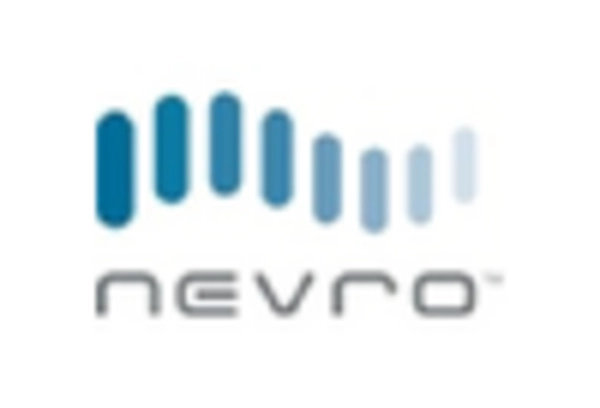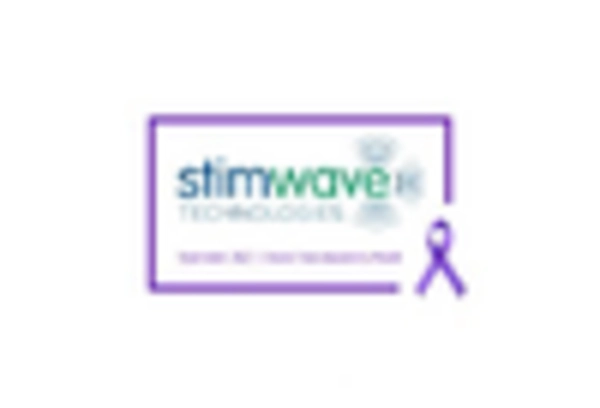Rising Incidence of Chronic Pain
The increasing prevalence of chronic pain conditions in the UK is a primary driver for the spinal cord-stimulator market. Conditions such as neuropathic pain, fibromyalgia, and failed back surgery syndrome are becoming more common, affecting a significant portion of the population. According to recent estimates, approximately 28 million adults in the UK experience chronic pain, which translates to around 43% of the adult population. This growing patient base necessitates effective pain management solutions, thereby propelling the demand for spinal cord stimulators. As healthcare providers seek innovative treatments to address this issue, the spinal cord-stimulator market is likely to expand, offering advanced technologies that can improve patient outcomes and quality of life.
Technological Innovations in Device Design
Innovations in the design and functionality of spinal cord stimulators are significantly influencing the market. Recent advancements include the development of closed-loop systems that automatically adjust stimulation based on real-time feedback from the patient. These technologies enhance the efficacy of pain relief while minimizing side effects. The introduction of smaller, more efficient devices has also made implantation procedures less invasive, which is appealing to both patients and healthcare providers. As the spinal cord-stimulator market continues to evolve with these technological advancements, it is expected that adoption rates will increase, leading to a more competitive landscape and improved patient satisfaction.
Aging Population and Associated Health Issues
The demographic shift towards an aging population in the UK is a significant driver for the spinal cord-stimulator market. As individuals age, they are more susceptible to various health issues, including chronic pain and neurological disorders. The Office for National Statistics projects that by 2040, the number of people aged 65 and over will increase by 40%, leading to a higher demand for effective pain management solutions. Spinal cord stimulators offer a viable option for treating age-related pain conditions, making them increasingly relevant in the healthcare landscape. This trend suggests a sustained growth trajectory for the spinal cord-stimulator market as the population ages.
Growing Investment in Healthcare Infrastructure
The UK government has been increasing its investment in healthcare infrastructure, which positively impacts the spinal cord-stimulator market. Enhanced funding for hospitals and clinics allows for the acquisition of advanced medical technologies, including spinal cord stimulators. This investment is crucial for improving patient access to innovative treatments. Furthermore, the National Health Service (NHS) has been actively promoting the use of spinal cord stimulators as part of its pain management strategies. As healthcare facilities upgrade their capabilities, the spinal cord-stimulator market is likely to benefit from increased adoption and integration into standard treatment protocols.
Increased Focus on Minimally Invasive Procedures
There is a growing trend towards minimally invasive procedures in the UK healthcare system, which is driving the spinal cord-stimulator market. Patients and healthcare providers alike are seeking alternatives to traditional surgical methods that often involve longer recovery times and higher risks. Spinal cord stimulators can be implanted with less invasive techniques, resulting in reduced hospital stays and quicker rehabilitation. This shift in preference aligns with broader healthcare goals of improving patient outcomes and reducing costs. As awareness of these benefits spreads, the spinal cord-stimulator market is likely to see increased demand, further solidifying its role in modern pain management.

















Leave a Comment